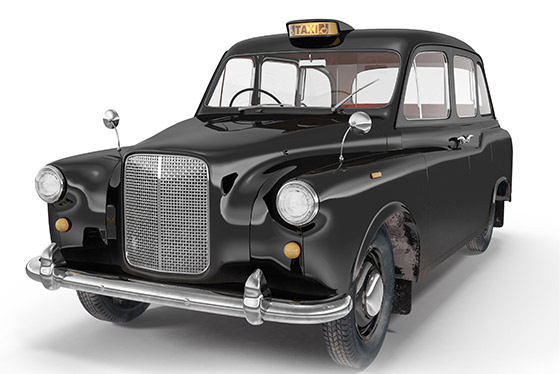What coverages does a first-party bike insurance policy include?
When it comes to bike insurance, most of us are unsure whether we should buy first-party or third-party insurance. You must already be aware that selecting the appropriate insurance kind is important. It is fully dependent on it for the protection of your legal rights and the amount of compensation you will receive for any losses.
Let’s start with a fundamental understanding of the differences between first-party and third-party insurance.
First-Party Insurance
Two-wheeler first-party insurance is a type of policy that provides complete coverage for your bike. As a result, it’s commonly referred to as a comprehensive policy. As the name implies, the policy covers first-party liabilities, such as those incurred by you, the policyholder. This first-party insurance for two-wheelers covers any damage to your bike. The insurer pays you directly for the compensation you are entitled to under this policy.
The biggest benefit of having first-party bike insurance is that it covers all types of damages, whether they are caused by humans or natural disasters. However, there are some circumstances in which you will not be able to file a claim:
- Depreciation due to normal wear and tear
- Breakdown due to mechanical or electrical failure
- Damages to tiress and tubes – in the event of an accident, the insurance company is liable for up to 50% of the damages.
- Damages are incurred when the driver is without a valid driver’s licence
- Damages incurred as a result of driving under the influence of alcohol or drugs
- Damages incurred as a result of a mutiny war or a nuclear assault
Third-Party Insurance
Third-party bike insurance, unlike first-party coverage, has a limited scope of coverage. It only protects you, the policyholder, from liabilities resulting from a person’s injury or property damage. It is known as third party two wheeler insurance cover because it ensures the protection of a third party outside the range of the insurance contract.
Third-party insurance is named after the fact that it only covers harm to a third party or their property. For instance, if you are involved in a bike accident, the other party can submit a claim with your bike insurance provider for the following expenses:
- Health-care costs
- In the event of disability or death as a result of an accident, there is no limit to the amount of coverage.
- Damages to third-party property are covered.
- If you have third-party insurance, you will not be able to file a claim for damages to your bike if it is stolen or is involved in an accident.
First-Party Insurance vs Third-Party Insurance
- Coverage Details: A third-party bike insurance policy only covers property damage and physical injury caused to a third party as a result of an accident. In this case, the policyholder is not able to recover damages or losses for his own vehicle that was involved in the accident. A first-party bike insurance policy gives only limited coverage for any damage to your bike, whether caused by man-made or natural disasters. In the event of an accident, most first-party bike insurance policies provide a personal accident cover of Rs 15 lakh for the owner or rider.
- Inclusion of Add-Ons: In terms of coverage for the insured’s own bike, a third-party bike insurance policy provides limited benefits. Furthermore, personal accident coverage is only available as an add-on. On the other hand, with first-party bike insurance, you may choose from a variety of add-ons, such as zero-depreciation coverage, roadside assistance coverage, consumable coverage, return to invoice coverage, co-rider accident coverage, key replacement cover, and so on. These optional coverages ensure that consumers have access to a complete bike insurance policy.
- Premium Price: Third-party bike insurance has a lower premium and a large market share in the Indian two-wheeler insurance market. First-party bike insurance, on the other hand, has a higher premium than third-party because the owner’s maximum risks are covered.
- Nature of Claims: The claim is only filed by the third-party in third-party bike insurance. Due to the fact that it only accepts claims for accidental damages, the third party must go through all legal procedures before receiving the claim amount. Under the “no-fault responsibility claims” category of the Motor Vehicle Act of 1988, you can file a third-party claim. It means that the claimant does not need to show that the insurer was negligent in causing the accident or to prove fault liability claims. In the case of first-party bike insurance, the insured can submit a claim directly with the insurer and is entitled to recover losses according to the policy’s conditions.
- Value of Bike: If you have an old bike with a low value, it is always a good idea to get third-party bike insurance so that any maintenance and damages may be easily handled. It is also less expensive than purchasing a higher-priced first-party bike insurance policy. If your bike is new or expensive, it is suggested that you purchase first-party bike insurance, as you will be able to easily recover your losses from your insurance in the event of damage.
Why choose a First-Party over a third-party insurance plan?
Because of the inexpensive rate and ability to help maintain compliance with the law, most bike owners in India get third-party bike insurance. However, by purchasing third-party bike insurance, you make yourself more liable to losses caused by accidents, natural disasters, or theft. Having first-party insurance will help you limit your own losses if your bike is damaged. Additional coverage options are also available, allowing you to tailor your bike insurance policy to your specific needs. The most significant benefit of first-party bike insurance is that the insurer are obliged to act with integrity and fairly.





























